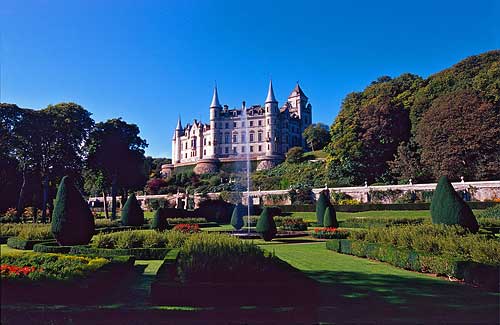
UPDATE: This beamer/projector has now been replaced by a new model the PT-AE4000
The 4000 model is claimed to be cheaper better an equipped with a longer lasting lamp than the PT-AE3000!
This beamer/projector has now been replaced by a new model the PT-AT5000
also in some countries called PT-AE7000
The Panasonic - PT-AE7000Uis an even better projector both in 3D and 2D than all of the ones below and at a price that makes it hard to resist, however the PT-AE3000 is still great if you don't care about 3D
However if you already bought the PT-AE3000 just ignore this I do since a new model doesn't make the older one lousier so the 3000 is still a fabulous beamer.
However if you are a new buyer lucky you,
just get the cheaper better one here! :0)
This is not a regular review since I will not only judge this projector / beamer only
for its ability to display hi resolution video material I will try to find out if this is a
Projector for photographers.
I will also judge it in respect of how it performs for watching stills (jpg images)
from digital cameras as well as scanned slides.
I will compare it against a regular film slide projector to se if it can replace my
trusty old Leica P150.

The new PT-AE3000 maximizes the image quality of the full-HD content in Blu-ray Discs
and HD broadcasts for large-screen viewing, and adds a newly designed optical system
that achieves a 60,000:1 contrast ratio and 1,600 lumens of brightness. A variety of
advanced signal-processing technologies, beginning with the Detail Clarity Processor 2
and Frame-Creation Interpolation, push the performance level of the LCD projector to an
entirely new level of picture quality and provide viewers with the true beauty of full-HD
images.Experience on-screen reality, complete with crisp, detailed images and lifelike depth, in
the new PT-AE3000. Its exceptional performance is further boosted by Panasonic's
collaboration with leading Hollywood filmmakers to ensure that it produces images that
mirror the director's artistic vision and intent, along with an ecology-concious design that
results in ultra-quiet operation and a lower environmental impact.
|
Optical system
- Full-HD Optimized Lens Unit - Each lens is carefully aligned to assure a uniform focusing balance from the center to the edges of the screen.
- Pure Color Filter Pro - This advanced filter system improves color purity, producing the deep, rich tones that distinguish movie images.
- Pure Contrast Plate Technology - Effectively block unwanted light leakage, dramatically increase dynamic range and help to achieve a contrast ratio of 60,000:1 and 1,600 lumens of brightness.
- Full-HD LCD Panels - Double-speed drive capability improves the projection clarity of moving images.
- Dynamic Iris - Adjusts the brightness level of images, virtually frame by frame, for added beauty in both dark and light scenes.
- Smooth Screen Technology - Eliminates the “chicken wire” effect for smooth, vivid, 3D-like images seen in movie theaters.
Digital Processing
- Detail Clarity Processor 2 - Optimizes the sharpness of each image portion to reproduce fine nuances lost in image compression.
- Waveform Monitor - Optimizes brightness output from a given video signal source.
- Split Adjust Mode - Freeze a scene and make adjustments while comparing the original and adjusted images side-by-side.
- Max. 16-Bit Digital Processing - Faithfully reproduces even subtle hues and brightness variations.
- Cinema Color Management - Adjust one color without affecting neighboring colors, for just the right equalization in hue, luminance and saturation.
Easy operation
- Lens Memory - Easily enjoy images with different image ratios on a wide, 2.35:1 screen for an immersive, movie-theater-like experience.
- Versatile Input Interfaces - Three HDMI input terminals and two component input terminals.
- 2x Optical Power Zoom/Focus - Project a 120-inch picture from as close as 11'10" to the screen or as far as 23'7" away.
- Lens Shift - Adjust the optical axis vertically and horizontally by a remote control for greater setup ease and flexibility.
- Intelligent Power Management System - Eco-friendly, the PT-AE3000 is designed to reduce power consumption at every frame, which also results in an ultra-quiet operation.
There is already lots of reviews that are covering the PT-AE 3000 in respect of home
cinema use [links to those can be found HERE] so I will concentrate on the matter of how
it perform for slideshows.
In this head to head comparing review I will use a selected slide that I will scan on
my slide scanner Canon FS-4000, I will enhance the image to perform as good as
possible for digital projection and then I will compare it with the analog projection.
I will take digital photos of the projection with my Nikon D200 and a sharp len to
make it possible for you to get an idea of the difference between the two contenders.
will use. The Dunrobin
Castle is scanned from
a Fuji Velvia 100 slide
scanned @ 4000dpi on
my Canon FS4000us
Slide scanner.
Image to the left is the
full frame from this slide.
I will compare this scan
projected by on Panasonic
PT-AE 3000 beamer to the
actual slide projected by
my slide projector.
